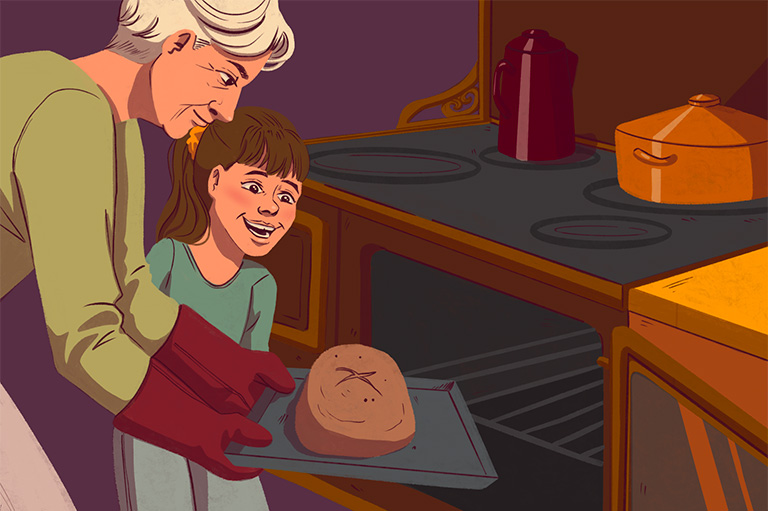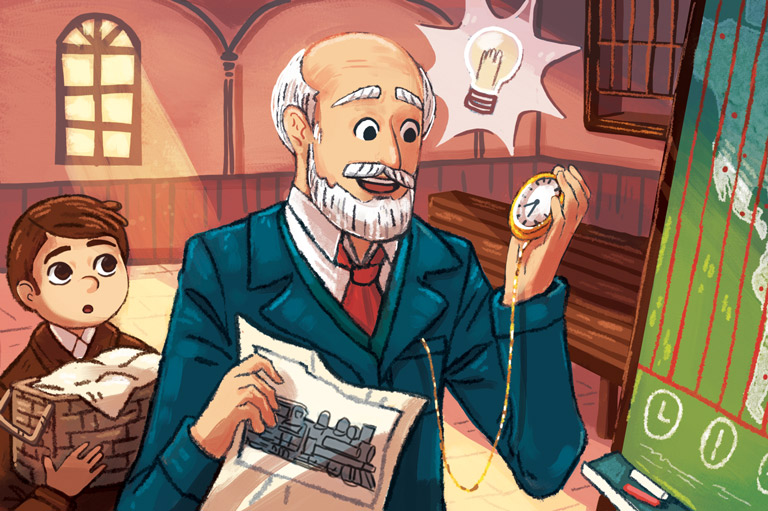Ataatasiaq’s Legacy

Baker Lake, Nunavut
October 23, 1990
The Arctic cold nipped at their faces as Kallu and his grandchildren got ready for their journey. The snow was clean and shiny, glimmering in the early morning sun.
“Are we going to the same place you hunted when you were a kid?” Albert, Kallu’s grandson, asked, his eyes wide with excitement.
“Yes,” Kallu replied with a smile.
“We’ll be using a qamutik, just like I did with my family. But this time, we are using a snowmobile, not sled dogs, and we’ll be sleeping in an igloo.”
Arna, Albert’s sister, added, “Wow, that sounds fun! How did your parents even know how to make igloos?”
Kallu chuckled. “We’ll learn to build them on this trip. It’s a chance to learn the skills that have kept our people alive for thousands of years. Atii!
“Now go tell your mom and grandma that we love them and we’ll miss them.”
The family said their goodbyes before setting off. The children were excited to learn new things, and even though the air was cold, Kallu felt a warm feeling as he remembered his childhood.
««««««««««««««««««
Long ago, when Kallu was just seven years old, he went on his first big hunting trip with his father and grandparents. The Arctic land stretched out in front of him, the sky and snowy tundra met and touched so beautifully, sparkling in the early morning sunlight.
Kallu sat in the back of the qamutik surrounded by caribou hides, furs, and tools, listening to the dogs running and barking. He was finally old enough to go on a hunting trip! He adjusted his new bone snow goggles, feeling proud.
They were heading to the caribou hunting grounds, travelling through the snowy mountains and across the wide valley. The land was always beautiful, but the tall mountains were especially amazing.
««««««««««««««««««
“Hey kiddos, are you ready now?” Kallu called out.
Kallu’s snowmobile roared to life as the children eagerly climbed onto the sled behind him.
“Yep, we’re ready!” Arna and Albert shouted together.
As they started moving, Kallu felt that same warm feeling again, thinking about his childhood. The town was now closer to the hunting grounds his family used to visit, so the trip would only take two days this time.

Arna called out, “Hey ataatasiaq, are we sleeping in snow? Is it going to be warm?”
Kallu replied. “Yes, Arna, we will sleep in a snow palace. We’re going to build an igloo.
“I’ll teach you how just like my father and grandpa taught me. But first, we need to find the right snow.”
“What’s the right snow?” Albert asked, curious.
“The right snow is thick, deep, and packed tightly,” Kallu explained. “It feels a bit starchy when you step on it. No worries — I know just the spot.”
The snowmobile sputtered to a stop at the edge of a huge snow hill. The snow here was perfect for building.
There were caribou tracks in the snow. The kids looked amazed. Kallu began cutting blocks of snow with a pana, a special knife.
“Come watch me,” Kallu said to his grandchildren. They eagerly gathered around him as he showed them how to cut out the snow blocks.
“When I was younger, I broke so many blocks! It takes practice,” Kallu laughed. “It’s not just about cutting and stacking the blocks,” he continued. “We need to dig out the area for the circle base and make an entrance. You two can start digging while I keep cutting the blocks.”
Arna and Albert made a few blocks, then grabbed shovels and began digging a circle and an entrance for their igloo. Kallu kept cutting and carrying the snow blocks to their growing dome structure.
“It is almost done! How can snow that is so cold keep us warm?”Arna asked.
“It traps our body heat inside,” Kallu explained. “We also use a stone oil lamp for light, for warmth and for cooking. The qulliq is very important— it’s how we dry our clothes and stay warm. It’s a tradition passed down through many generations.”
Kallu’s voice softened. “Your great-grandma, my mother, taught me how important these skills are. Knowing how to build an igloo and use the qulliq connects us with our ancestors. It’s a tradition that has kept us safe and warm for thousands of years.”
Arna looked up at her grandfather, eyes wide with understanding. “It must have been hard, always having to build a new igloo wherever you went.”
“It was,” Kallu agreed with a nod. “But it was also a part of our life. We followed the animals and learned from the land, our Nuna.”
As the sun began to set, the igloo took shape. Kallu and his grandchildren worked together, stacking the blocks and finishing the entrance.
“Let’s put the last few blocks in place,” Kallu said, his voice full of pride.
With the final blocks in place, the igloo stood ready. The children ran to the sled to grab caribou hides and furs and brought them inside, making a warm place to sit. As they settled in for the night, Kallu dimmed the qulliq.
The children enjoyed a delicious dinner of caribou stew and bannock as a reward for their hard work building the igloo.
Looking around at his grandchildren, Kallu felt a deep sense of happiness. They were carrying forward the traditions and teachings of their people, cherishing their heritage and keeping it alive for the next generation.

Inuit have been building igloos for shelter for thousands of years. The igloo (iglu in Inuktut) is a brilliant invention.
Using a special knife (pana), the builder cuts narrow blocks of hardpacked snow, levels them along the bottom and arranges them in a circle. The walls rise in a spiral pattern and gradually slope inward to create a dome. Any cracks between blocks are packed with snow. An igloo might be small enough for one hunter caught out on the land in a storm, or big enough for a family of 15 people.
Inuit today live in modern houses, but the igloo is still an important part of their culture. Although we invented the characters in this story, people like Kallu are teaching Inuit children the stories and skills involved in building an igloo.









